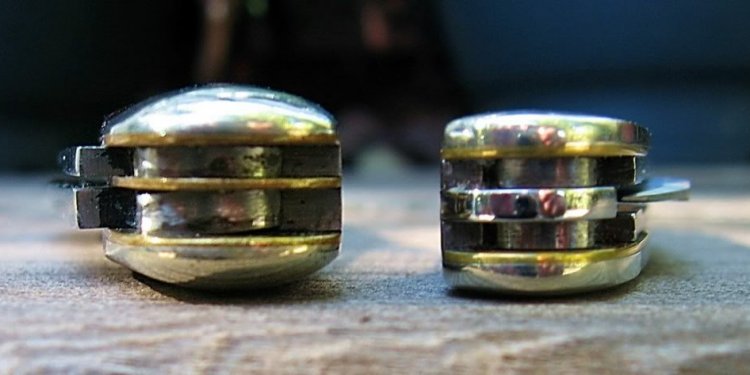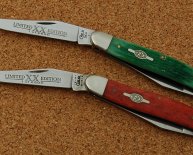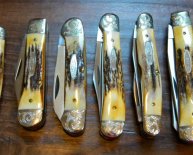Everyone would love to purchase a Case knife and have it remain in its perfect, brand-new state forever. But, we all know that once you start using your Case, you never stop. Heres how you can keep those knives looking sharp and working great!
Most experts would agree that the number one rule to follow when cleaning any knife is to work patiently and slowly. If you work too fast or clean too much, you may damage the knife and reduce its value.
Removing Dirt
The first step in cleaning an older knife is to remove any lint, grease, or dirt. Some of the most common tools for this task are clean, soft rags or cloths, wooden toothpicks, old soft-brushed toothbrushes, and cotton tipped swabs. These tools should be used with light, non-drying, non-staining oil.
Removing Rust
Rust spots on older knives should be oiled well and the knife should be allowed to sit for a few days. Rust can then be removed by carefully scraping away the rust spot with the tip of a sharp, stiff knife. Once again, proceed slowly and cautiously. By scraping away only the actual rust, you leave intact any of the original finish that remains.
Removing Adhesives
Many older knives will have sticky adhesive tape residue on the handles from old labels. This can easily be removed with nail polish remover applied to a soft cloth. Acetone is the active ingredient in nail polish remover, so use it in a well-ventilated area. Lighter fluid may also be used for the same task. Extreme care should be taken when using either, for they are both highly flammable.
Re-sharpening Your Knife
Hold the blade at a 10” to 15” angle from the surface of a sharpening stone. Maintain a constant angle and stroke the blade as if shaving a thin layer from the stone. Repeat the stroking motion along the entire edge of the blade starting at the blade heel and working to the tip. Turn the blade over and repeat the process.
Cleaning Blades and Handles
Apply a small drop of oil in the joints of your knife and a small amount of oil on a clean, soft rag or cloth. Then, wipe down the blades and handles with the soft cloth. The inside of the knife can be cleaned with the cotton-tipped swabs and wooden tooth picks. Take special care when using pipe cleaners to avoid scratching the surface with their wire core. Toothpicks or toothbrushes can be used to clean out the crevices in the jigging and other small areas where gunk can accumulate.
Storing Your Knives
When your knife cleaning tasks are complete and your knives once again look shiny and new, store them properly to ensure that they stay clean and rust free. Many experts recommend storing your knives in vinyl rolls with cloth interiors. Knife rolls are also great for transporting your knives to swap meets or knife shows. Display cases with felt interiors are also good for knife storage and they also allow knives to be shown easily.



















